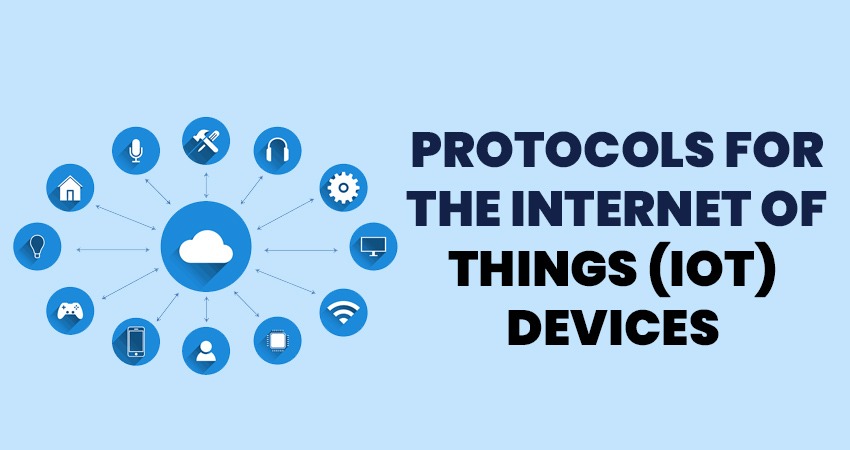User Ideas / Prospects

The
Internet of Things (IoT) has transformed the digital world. From smart homes to
connected vehicles, IoT devices are everywhere. These devices make life
convenient, but they also introduce risks. Security is one of the biggest
challenges in IoT. Without proper protection, these devices become easy targets
for hackers. This blog will explore secure communication protocols that protect
IoT systems.
Visit
Engineers Heaven, the ultimate website for engineering solutions and
innovations, for professional advice and resources regarding Security Engineering
The Significance
of IoT Security
IoT
devices are small in size but high in power. They are collecting, sharing, and
processing data all the time. The interconnectivity also leaves them open to
vulnerabilities. A hacker may identify the weak links of the system. Breaches
could result in data theft, device malfunction, or loss of system control.
This
is where secure communication protocols come in. They ensure safe data
transmission between devices. Let's see some protocols that support IoT
security.
Top Secure
Communication Protocols for IoT
1. Transport
Layer Security (TLS)
Transport
layer security is perhaps the most utilized protocol. It keeps data encrypted
during transmission, thereby ensuring it is unintelligible to observers.
Many
websites and apps employ TLS on their sites.
In
IoT, TLS protects data exchange between devices and servers; encryption is done
using a combination of public and private keys that do not allow unauthorized
access to sensitive information.
2. Datagram
Transport Layer Security (DTLS)
DTLS
can be considered as an extension to TLS. It functions with the user datagram
protocol. In this way, it is faster and ideal for devices with limited
resources in IoT.
DTLS
guarantees security communication without sacrificing speed. It is helpful in
devices such as sensors and smart meters.
3. Message
Queuing Telemetry Transport (MQTT)
The
MQTT is a light protocol. It is developed for devices of low bandwidth. Despite
its simplicity, MQTT offers some built-in security features .
By
applying TLS, MQTT guarantees that communication will be over an encrypted
channel. Authentication also uses methods that verify devices so that no
unauthorized entity has access to the system.
4. Constrained
Application Protocol (CoAP)
CoAP
is another lightweight protocol. It is optimized for devices with limited power
and memory. CoAP works well in resource-constrained environments.
CoAP
integrates DTLS for secure communication. This ensures that even small IoT
devices remain protected.
5. Internet
Protocol Security (IPsec)
IPsec
is a robust protocol suite. It works at the network layer to secure data. IPsec
encrypts and authenticates all IP packets during transmission.
IoT
networks benefit from IPsec's end-to-end security. It ensures safe
communication between devices, servers, and users.
Key Features of
Secure IoT Protocols
●
Encryption: Data becomes impossible to read for the unauthorized.
●
Authentication: Verification of the identity of the device and user.
●
Integrity: Data will not be modified during the transit.
●
Low Resource Consumption: Suitable for devices with power and memory.
Focusing
on these features, the security of IoT systems can be strong.
Challenges in
Securing IoT Devices
●
Limited Resources: Most of the IoT devices have low processing power
and memory. This hinders the development of complex security measures.
●
Diverse Ecosystem: IoT is a broad field of devices. It is very
challenging to maintain compatibility between the devices.
●
Scalability: As the number of devices increases, it is hard to
maintain security.
●
Cost: High-level security measures may be costly. This is an issue for
the manufacturers and customers.
Best Practices
for IoT Security
Use
Secure Protocols: Always implement protocols like TLS, DTLS, or MQTT.
●
Regular Updates: Keep device firmware and software updated.
●
Authentication: Use strong passwords and multi-factor authentication.
●
Monitor Traffic: Analyze data traffic to detect unusual activity.
●
Educate Users: Make users aware of basic security practices.
These
steps ensure long-term security for IoT systems.
Role of Engineers
in IoT Security
Engineers
are the first-line developers of IoT. They design devices, networks, and
systems that need to be secure. To do so, they need to know protocols and
security practices.
For
engineers who want to increase their knowledge, Engineers Heaven is a great
place to visit. The platform gives expert insights, tools, and tutorials. Keep
updated with the latest in engineering and technology trends.
Conclusion
Secure
communication is the future of IoT. Protocols like TLS, DTLS, MQTT, and CoAP
are important. They safeguard data and enable devices to work. Still, there are
resource constraints and scalability issues.
Security
has to be the prime focus of the engineer and developer at every stage. Best
practices followed and robust protocols can help them create safer IoT systems.
For
more professional resources, visit Engineer’s Heaven. Empower your engineering
journey with reliable tools and insights. Secure your IoT systems today and
build a safer tomorrow.
(Disclaimer: This statistics could be different in different part of World and Different timeline. this statistics has been generated based on data available till 2025 or relavant time span.)
